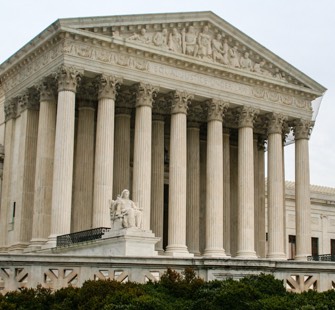PTAB institutes 6 IPRs challenging RESTASIS patents
 The Patent Trial and Appeal Board (PTAB) of the United States Patent and Trademark Office (USPTO) recently instituted six separate inter partes reviews (IPRs) against patents owned by Allergan plc (NYSE: AGN), which cover RESTASIS® (Cyclosporine Ophthalmic Emulsion) 0.05%. RESTASIS® is an eye drop that helps increase the eyes’ natural ability to make tears. Mylan Pharmaceutical Inc. says they expect PTAB decisions on the IPRs sometime during the fourth quarter of 2017.
The Patent Trial and Appeal Board (PTAB) of the United States Patent and Trademark Office (USPTO) recently instituted six separate inter partes reviews (IPRs) against patents owned by Allergan plc (NYSE: AGN), which cover RESTASIS® (Cyclosporine Ophthalmic Emulsion) 0.05%. RESTASIS® is an eye drop that helps increase the eyes’ natural ability to make tears. Mylan Pharmaceutical Inc. says they expect PTAB decisions on the IPRs sometime during the fourth quarter of 2017.
All the challenged patents are set to expire on August 27, 2024 and are listed in FDA’s Orange Guide. The patents being challenged are U.S. Patent Nos. 8,629,111 (the “‘111 patent”), 8,633,162 (the “‘162 patent”), 8,642,556 (the “‘556 patent”), 8,648,048 (the “‘048 patent”), 8,685,930 (the “‘930 patent”), and 9,248,191 (the “‘191 patent”). Hatch-Waxman litigations involving these patents against Mylan and other generic defendants remain pending in the United States District Court for the Eastern District of Texas.
PTAB denies to institute CBM citing Enfish v. Microsoft
 The Patent Trial and Appeal Board (PTAB) of the United States Patent and Trademark Office (USPTO) recently declined to institute a CBM review of U.S. Patent No. 6,006,227, owned by Mirror World Technologies, LLC. See Apple, Inc. et al v. Mirror World Technologies, LLC. The decision is significant not only because the PTAB refused to institute a covered business method review, but because the panel — Administrative Patent Judges Thomas Giannetti, David McKone, and Barbara Parvis — cited the Federal Circuit’s recent decision in Enfish v. Microsoft when they found that the challenged claims of the ‘227 patent were not abstract.
The Patent Trial and Appeal Board (PTAB) of the United States Patent and Trademark Office (USPTO) recently declined to institute a CBM review of U.S. Patent No. 6,006,227, owned by Mirror World Technologies, LLC. See Apple, Inc. et al v. Mirror World Technologies, LLC. The decision is significant not only because the PTAB refused to institute a covered business method review, but because the panel — Administrative Patent Judges Thomas Giannetti, David McKone, and Barbara Parvis — cited the Federal Circuit’s recent decision in Enfish v. Microsoft when they found that the challenged claims of the ‘227 patent were not abstract.
The Petitioners argued that the challenged claims are directed to an abstract idea that is not patent-eligible subject matter. According to the Petitioners, “the challenged claims of the ‘227 patent are directed to the abstract idea of organizing items of information, i.e., ‘data units,’ in chronological order.” The patent owner responded that the Petitioners’ view “entirely omits the core concept of the claimed invention: using a ‘main stream’ and ‘substreams.’”
06.5.16 | posts | Gene Quinn
PTAB names Medtronic CardioVascular Chief Patent Counsel as new PTAB Chief
 The United States Patent and Trademark Office (USPTO) recently announced the appointment of David P. Ruschke as the next Chief Judge for the Patent Trial and Appeal Board (PTAB). Ruschke will begin his new role at USPTO headquarters in Alexandria, VA, on May 23, 2016.
The United States Patent and Trademark Office (USPTO) recently announced the appointment of David P. Ruschke as the next Chief Judge for the Patent Trial and Appeal Board (PTAB). Ruschke will begin his new role at USPTO headquarters in Alexandria, VA, on May 23, 2016.
“The Patent Trial and Appeal Board plays a critical role in the patent ecosystem, especially since the launch of post-grant trials authorized in the America Invents Act of 2011,” said Under Secretary of Commerce for Intellectual Property and Director of the United States Patent and Trademark Office Michelle K. Lee. “David’s breadth of experience in global patent opposition proceedings and his deep understanding of intellectual property positions him perfectly to lead our Board well into the future.”
“Director Lee has assembled a highly talented and hard-working team at the USPTO. I am excited to have the opportunity to join the talented judges and staff of the PTAB as we work together to serve America’s inventors,” said Ruschke.
05.20.16 | Patent Issues, USPTO | Gene Quinn
New Post Grant Rules Become Effective, No Changes to Motions to Amend
 On April 1, 2016, the United States Patent and Trademark Office published final rules in the Federal Register that relate to post grant proceedings. These new final rules went into effect on May 2, 2016, and amend the existing PTAB trial practice rules pertaining to inter partes review (IPR), post grant review (PGR), covered business method (CBM) review, and derivation proceedings brought into being by provisions of the America Invents Act (AIA).
On April 1, 2016, the United States Patent and Trademark Office published final rules in the Federal Register that relate to post grant proceedings. These new final rules went into effect on May 2, 2016, and amend the existing PTAB trial practice rules pertaining to inter partes review (IPR), post grant review (PGR), covered business method (CBM) review, and derivation proceedings brought into being by provisions of the America Invents Act (AIA).
In a nutshell, these new rules change existing practice by allowing new testimonial evidence to be submitted with a patent owner’s preliminary response, adding a Rule 11-type certification for papers filed in a proceeding, allowing a claim construction approach that emulates the approach used by a district court following Phillips v. AWH Corp., 415 F.3d 1303 (Fed. Cir. 2005) for claims of patents that will expire before entry of a final written decision, and replacing the current page limit with a word count limit for major briefing. These final rules are the culmination of a process started two years ago. For more information on the changes taking effect, please see Patent Office amends PTAB Trial Practice Rules.
Many had hoped that the Office would make it easier for patent owners to successfully amend patent claims in post grant proceedings, but the Office stood firm.
05.5.16 | Inter Partes Review, Patent Issues, Post Grant Review, USPTO | Gene Quinn
Supreme Court will decide whether BRI or Phillips standard applies to IPR claims
 During patent examination, pending patent claims are given the broadest reasonable interpretation (“BRI”) that is consistent with the specification, as would be understood by one of ordinary skill in the art. See Phillips v. AWH Corp., 415 F.3d 1303, 1316 (Fed. Cir. 2005).
During patent examination, pending patent claims are given the broadest reasonable interpretation (“BRI”) that is consistent with the specification, as would be understood by one of ordinary skill in the art. See Phillips v. AWH Corp., 415 F.3d 1303, 1316 (Fed. Cir. 2005).
The Patent Office applies the broadest reasonable interpretation in virtually all circumstances. It is, however, true that at least one situation where the Patent Office does not use broadest reasonable interpretation is when a reexamination of a patent is undertaken and reexamination will not be concluded until after the patent term has expired. The position of the USPTO is that, in this situation, a patent could not be changed because the term has expired; therefore, the only remaining “life” a patent has would be in litigation because the statute of limitations for a patent infringement action is six years. Thus, the USPTO applies the Phillips standard. (Further discussion of this advanced topic goes beyond the scope of this article, which is intended to be a primer on the broadest reasonable interpretation standard.)


No Comments
12.21.16 | Inter Partes Review, Patent Issues | Gene Quinn